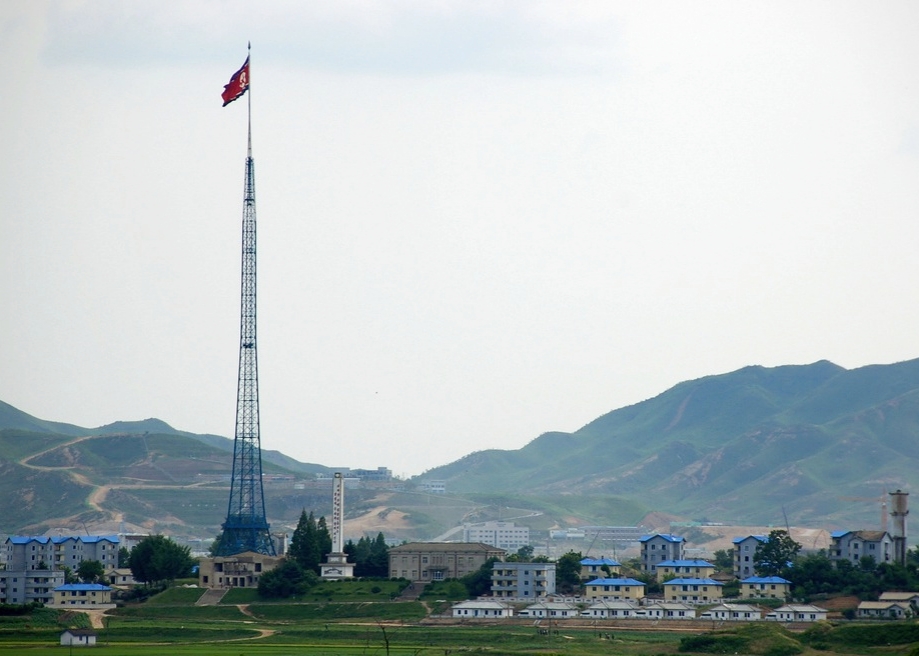A Fake Village and a Colossal Flagpole: North Korea's Bizarre Propaganda Methods
Atlas Obscura on Slate is a new travel blog. Like us on Facebook, Tumblr, or follow us on Twitter @atlasobscura.
Within the two-and-a-half-mile-wide, heavily guarded Demilitarized Zone that separates North and South Korea are two villages—one on each side of the border. Built in the 1950s following the Korean War cease-fire, the northern village of Kijong-dong is a collection of well-appointed, multistory buildings home to 200 families who spend their days happily tending to farms, going to school, or swinging by the hospital for a check-up. At least, that is the official story according to the North Korean government. In reality, Kijong-dong is an uninhabited propaganda village built to reflect an imagined economic success in an attempt to lure defectors from the south.
Viewed from a distance, Kijong-dong—or "Peace Village," as it's called by North Korea—is unremarkable, if a little drab. Look closer, however, and the trickery is revealed. Residential buildings have no glass in their windows. Electric lights—an unheard of luxury for rural North Koreans—operate on an automatic timer. The only people in sight are maintenance workers, occasionally dispatched to sweep the streets in order to give the impression of ongoing activity.
One mile from Kijong-dong, on the south side of the border, is the village of Taesong-dong. Its few hundred residents live in an in-between state—as residents of the DMZ, they are exempt from taxes and compulsory military service, but these perks come at the price of their freedom. An 11 p.m. curfew is strictly enforced, and relocation is prohibited.
The opposing villages, which sit one mile opposite one another, offer a study in the often ridiculous one-upmanship between North and South Korea. In the 1980s, the South Korean government erected a 323-foot-tall pole in Taesong-dong and flew the country's flag. North Korea responded by building a 525-foot flagpole—then the tallest in the world—and raised an even larger flag over Kijong-dong.
The flag was but one tactic in North Korea's nationalism offensive. Until 2004, loudspeakers in Kijong-dong blared propaganda messages praising the country and encouraging residents of the south to defect. When this approach failed to lure South Koreans across the border, the speakers began blasting 20 daily hours of anti-Western rhetoric, communist operas, and strident marching music. There has been no reported increase in defection following the switch.
Baffling North Korea:
- The International Friendship Exhibition Hall displays despots' gifts to Kim Jong-il -- like a stuffed alligator posed as a cocktail waiter
- Mangyongdae Funfair may be the saddest, least amusing amusement park in the world
- According to the DPRK, the very real "Third Tunnel of Aggression" does not exist
View North Korea in a larger map

